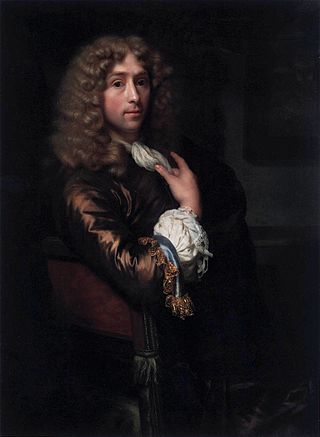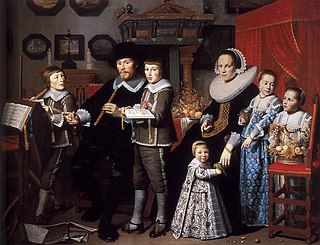External links
| International | |
|---|---|
| National | |
| Artists | |
| People | |
Johannes Adrianus George van Herwijnen (4 November 1889 in Delft – 12 April 1965 in Bergen) [1] was a Dutch painter.
Van Herwijnen was born in Delft and grew up in the Jordaan (Amsterdam). He was different from the rest of the family. At nine he went to the Rijksmuseum a tile table for copying, his master had given him a box of paints. Concerts and museums hold him up as he began his eleventh year to earn a living.
He went to France with his family and lived from 1921 to 1923 in Collioure. The paintings of Collioure feature the clean lines of the drawings in which the paint is filled with much blue and purple. Then follows a gloomy period when his wife leaves him. Paintings reflect his depressive state and are very dark. When he goes to Florence, his work is lightened. "The conquest of light" in all newspapers and magazines celebrated with superlatives. "Van Herwijnen in the front ranks of contemporary painters came."
In the autumn of 1934, he moved a house in the new studio complex on the Summer Dijkstraat. Van Herwijnen married again and moved to Bergen in 1945.
In 1919 the artist signed a series of life-size portraits of people declared insane, in the Utrecht William Arntz Foundation. Shortly after World War II Van Herwijnen painted a series of portraits of dead.

Delft is a city and municipality in the province of South Holland, Netherlands. It is located between Rotterdam, to the southeast, and The Hague, to the northwest. Together with them, it is a part of both the Rotterdam–The Hague metropolitan area and the Randstad.

Paulus Potter was a Dutch painter who specialized in animals within landscapes, usually with a low vantage point.

Jan Havickszoon Steen was a Dutch Golden Age painter, one of the leading genre painters of the 17th century. His works are known for their psychological insight, sense of humour and abundance of colour.

Pieter Hendricksz. de Hooch, was a Dutch Golden Age painter famous for his genre works of quiet domestic scenes with an open doorway. He was a contemporary, in the Delft Guild of St. Luke, of Jan Vermeer with whom his work shares themes and style. De Hooch was first recorded in Delft on 5 August 1652, when he and another painter, Hendrick van der Burgh witnessed the signing of a will. He was active in 1683, but his date of death is unknown.

Gerard van Honthorst was a Dutch Golden Age painter who became known for his depiction of artificially lit scenes, eventually receiving the nickname Gherardo delle Notti. Early in his career he visited Rome, where he had great success painting in a style influenced by Caravaggio. Following his return to the Netherlands he became a leading portrait painter. Van Honthorst's contemporaries included Utrecht painters Hendrick Ter Brugghen and Dirck van Baburen.

Maarten van Heemskerck, also known as Marten Jacobsz Heemskerk van Veen, was a Dutch portrait and religious painter, who spent most of his career in Haarlem. He was a pupil of Jan van Scorel, and adopted his teacher's Italian-influenced style. He spent the years 1532–36 in Italy. He produced many designs for engravers, and is especially known for his depictions of the Wonders of the World.

Adriaen Pietersz van de Venne, was a versatile Dutch Golden Age painter of allegories, genre subjects, and portraits, as well as a miniaturist, book illustrator, designer of political satires, and versifier.

Godfried Schalcken was a Dutch artist who specialized in genre paintings and portraits. Schalcken was noted for his night scenes and mastery in reproducing the effect of candlelight. He painted in the highly polished style of the Leiden fijnschilders.

Michiel Janszoonvan Mierevelt was a Dutch painter and draftsman of the Dutch Golden Age.

Jacob Adriaensz Backer was a Dutch Golden Age painter. He produced about 140 paintings in twenty years, including portraits, religious subjects, and mythological paintings. In his style, he was influenced by Wybrand de Geest, Rubens and Abraham Bloemaert. He is also noted for his drawings of male and female nudes.

Leonaert Bramer, also Leendert or Leonard, was a Dutch painter known primarily for genre, religious, and history paintings. Very prolific as a painter and draftsman, he is noted especially for nocturnal scenes which show a penchant for exotic details of costume and setting. He also painted frescos—a rarity north of the Alps—which have not survived, as well as murals on canvas, few of which are extant. Bramer is one of the most intriguing personalities in seventeenth-century Dutch art.

Hendrick Corneliszoon van Vliet was a Dutch Golden Age painter remembered mostly for his church interiors.

Anthonie Palamedesz., also Antonie Palamedesz, birth name Antonius Stevens, was a Dutch portrait and genre painter. He is in particular known for his merry company paintings depicting elegant figures engaged in play, music and conversation as well as guardroom scenes showing soldiers in guardrooms. Like many Dutch painters of his time, he painted portraits and still lifes, including vanitas still lifes. He further painted the staffage in a few views of the interior of churches. He played a major role in the development of genre painting in Delft in the mid 17th century.

Pieter Anthonisz van Bronckhorst or Bronkhorst, was a Dutch painter active in Delft. He was mainly an architectural painter known for his church interiors and fantasy palaces with small figures representing biblical stories. It is possible he also painted still lifes and was a staffage painter for other painters.

Nicolaas Verkolje or Vercolje, was a Dutch painter and mezzotinter.
He specialized in history pieces and portraits in a classicistic style.

Balthasar Denner was a German painter, highly regarded as a portraitist. He painted mostly half-length and head-and-shoulders portraits and a few group portraits of families in interiors. Usually Denner concentrated on the face; clothes and paraphernalia were done by other painters or later his daughter. His chief peculiarity consisted in the fineness of his mechanical finish, which extended to depicting even the almost invisible furze of hair growing on smooth skin. He is particularly noted for his heads of old men and women.

Jan Theuns (1877–1961). Dutch painter born in 1877 in Breda (Netherlands) and well known as a landscape and portrait painter.

Herman van der Mast was a Dutch Renaissance painter from the Northern Netherlands.

Hermanus Ellen (Herman) Mees was a Dutch artist, active as painter, watercolorist, draftsman, pastelist, lithographer, and academy lecturer. He was specialized in portrait painting.

Hendrik Jan (Henk) Wolter was a Dutch painter, primarily known for his impressionistic and luministic paintings, influenced by the French impressionists and Belgian luminists Emile Claus and Theo van Rysselberghe.